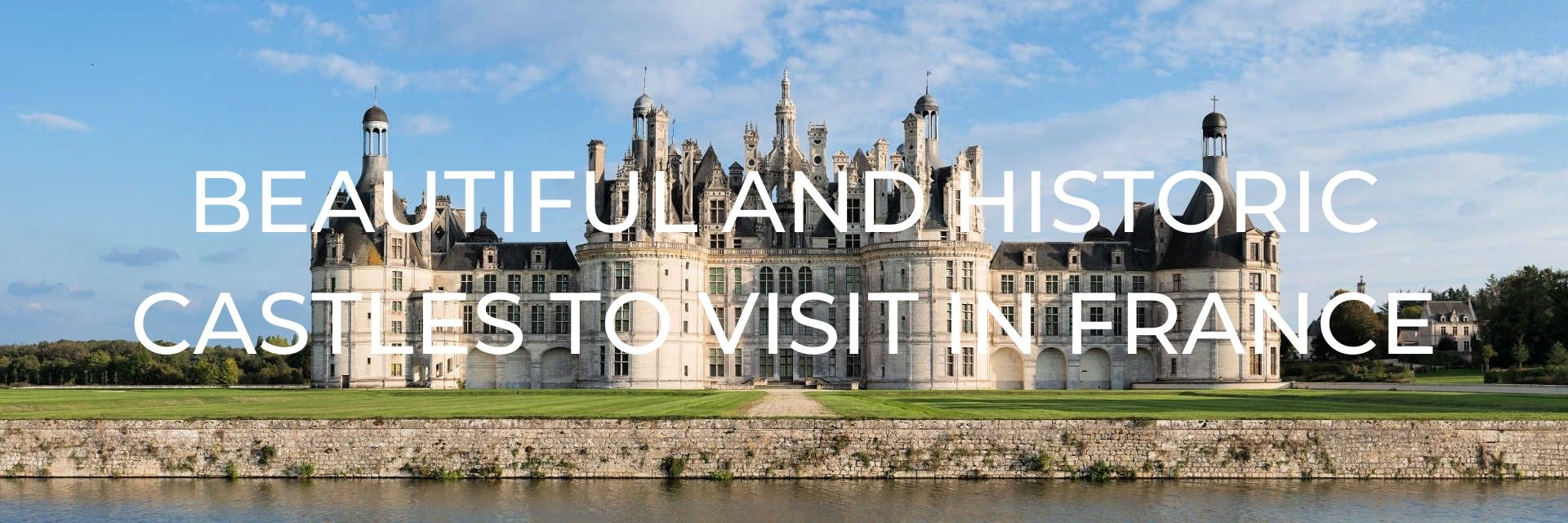
Found on the banks of rivers (or even across them), the edges of forests or atop hills, each castle has its own story and paints a picture of historic times. Though some of France’s châteaux were built as fortresses, others were built from the beginning to be palaces with less need or focus on defence.
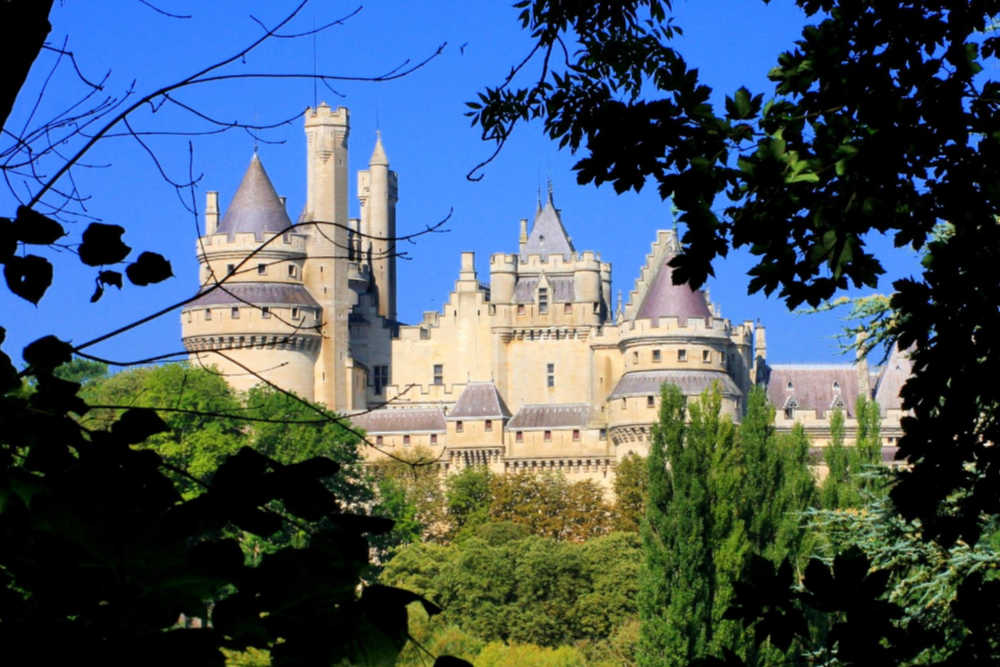
Over the centuries, some of the châteaux were abandoned and fell into disrepair or were deliberately destroyed. Thankfully many survived the centuries, whilst others have been restored to their former glory for visitors to explore. Though even those that are now ruined offer fascinating insights into history for visitors.
With literally hundreds of castles or castle ruins to explore, there is no shortage of options for an enthusiastic castle lover to visit and it would be impossible to narrow it down to the ‘best’ castles to visit in France. So instead, we’ve rounded up recommendations of some of France’s most beautiful and historic castles from fellow travel bloggers and us that you’ll want to add to your own trip to France.
This post may contain affiliate links. Please read our full disclosure policy here.
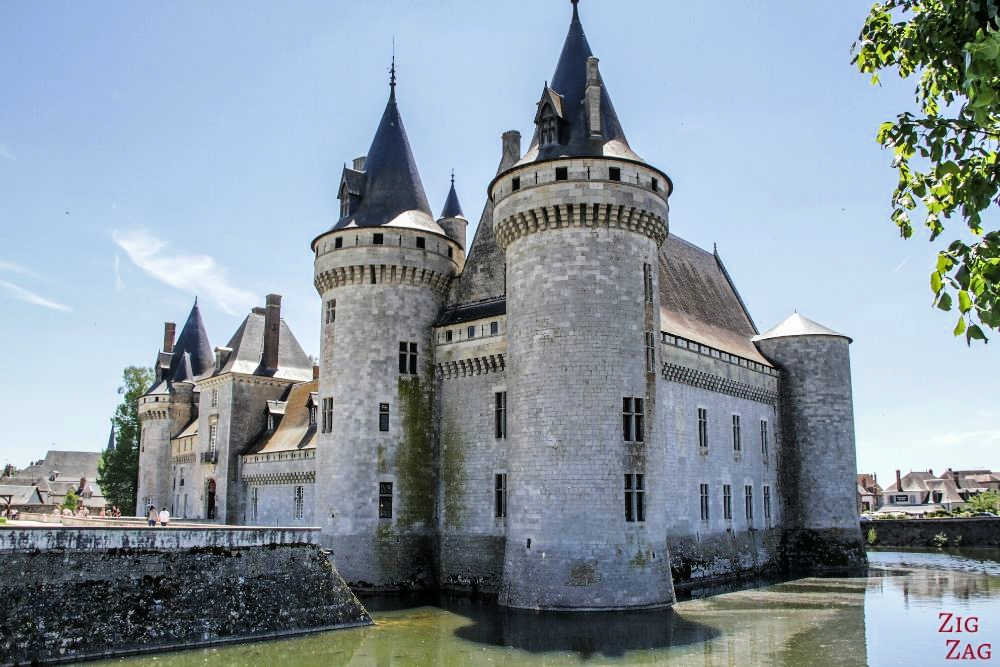
The Sully-Sur-Loire Castle is a great French castle to visit with the whole family. It is located east of Orleans about a two-hour drive from Paris. It has all the elements that make a castle beautiful: high towers, deep ditches with water, bridges, tapestries, and paintings.
But what makes this castle particularly enjoyable to visit is:
- The size.. some of the French castles are huge but this one has a reasonable size and the visit does not feel too long nor is it too short;
- The originality of some of the displays and sometimes culinary discoveries from medieval times;
- The exploration path that feels like you are looking for secret passageways. Children will enjoy the visit (however note that there are quite a lot of stairs which could be difficult for people with knee problems);
- The charming town surrounding it.
This medieval fortress was first built at the end of the 14th–century at a crossing of the Loire river. Major changes happened during the 17th-century after Maximilien de Bethune purchased the castle in 1602. He added fortifications and towers to make it harder to attack. Sadly parts of the castle were destroyed during the 18th and 19th centuries.
Over the 20th century, it was rebuilt (with modifications) but damaged again during WWII. But the French are strong-willed, and it was restored again after the war. Today it is open to the public, for visitors to marvel at this historical landmark.
Contribution and Photo from Clair of ZigZag On Earth
Reviews of Château de Sully | Rue du Château, 71360 Sully, France
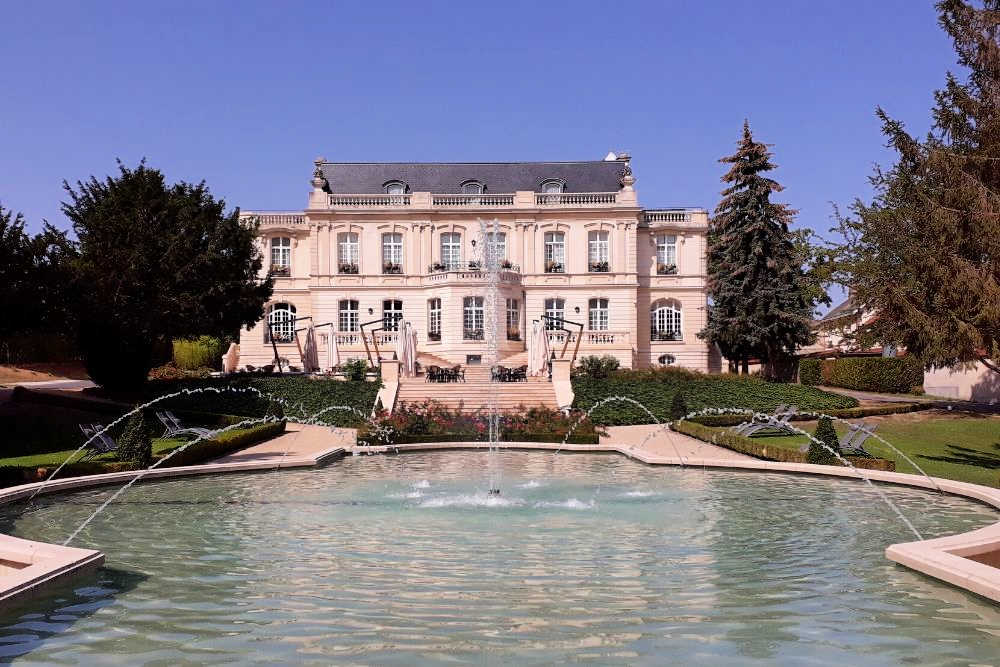
When travelling the Champagne region of northeast France there are many opportunities to stay in châteaux or castles. One of our favourites is Château de Rilly at 38 Rue de Reims in the town of Rilly-la-Montagne only 14.3 km from Reims.
After a day of champagne tasting, there is nothing better than coming back to the luxurious Château de Rilly and enjoying gastronomic delights in the restaurant. The chef and his team work their magic on seasonal locally grown produce for their innovative menu. We highly recommend that you plan to have breakfast before heading out for more champagne tasting and sight-seeing. Our top tip is to order their scrambled eggs!
There are 15 luxurious rooms to choose from and one has disabled access available. Whilst there why not indulge yourself in one of their spa treatments?
Originally the château was an 18th-century wine house named “La Maison de Lossy” and built by M. Le Baron De Lossy founder of the De Lossy Champagne brand. The wine cellar used to contain more than 3 million bottles of their famous champagne.
The mansion was purchased by the Germain family and later sold to Mr. and Mrs. Serena in 2008. It took them five years to transform the mansion into Château de Rilly – a hotel and restaurant which opened for the first time to the public on June 1st, 2012.
Contribution and Photo from Jane and Duncan of To Travel Too
Reviews of Le Château de Rilly | 38 Rue de Reims, 51500 Rilly-la-Montagne, France
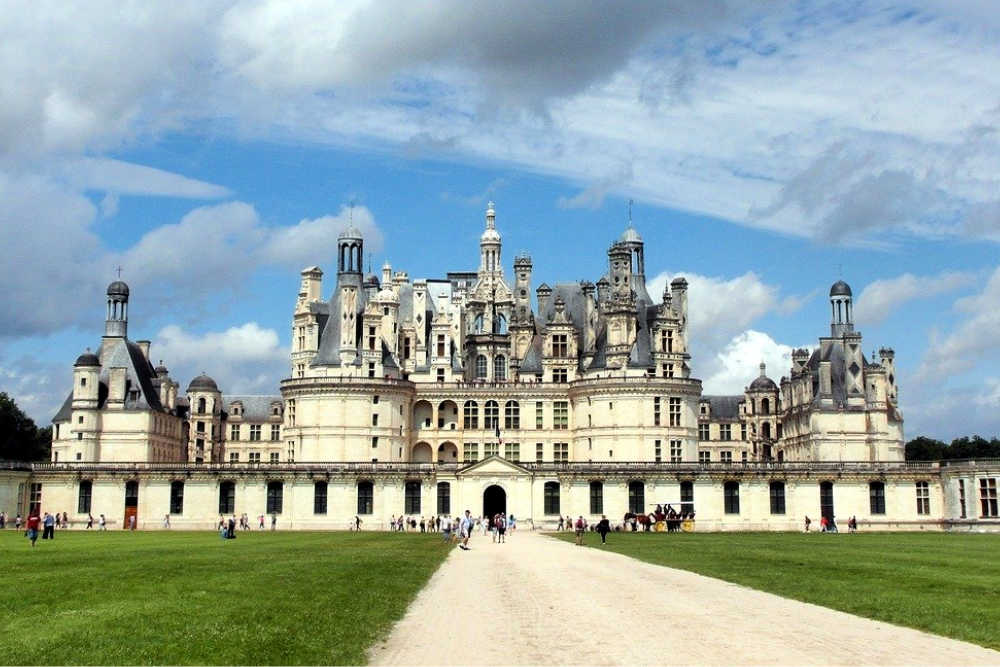
Château de Chambord is one of the world’s most recognizable castles and is a symbol of the French Renaissance. The castle, intended to be used as a hunting lodge, was built to impress the king’s rivals and continues to astonish visitors today. Chambord was the first Loire château to be included on the UNESCO World Heritage list.
The Château de Chambord is unfinished and yet remains the largest château in the Loire Valley, with 426 rooms, 83 staircases, and 282 fireplaces. King Francois I himself only spent a handful of weeks in the castle on short hunting trips. The castle’s design was ambitious and was influenced by both French and Italian Renaissance architecture. Leonardo da Vinci who was “the King’s first painter, architect, and engineer” is credited with the design for the castle’s famous double staircase.
The castle’s grounds make up the largest walled and enclosed park in Europe and cover the same amount of land as Paris proper. The castle grounds continue to be a home for numerous stags, wild boars, and other fauna so visitors can observe what made these grounds attractive to the king in the first place.
Chambord remains a must-see for any trip to the Loire Valley.
Contribution and Photo from Rosie of Popcuria
Reviews of Château de Chambord | Château, 41250 Chambord, France
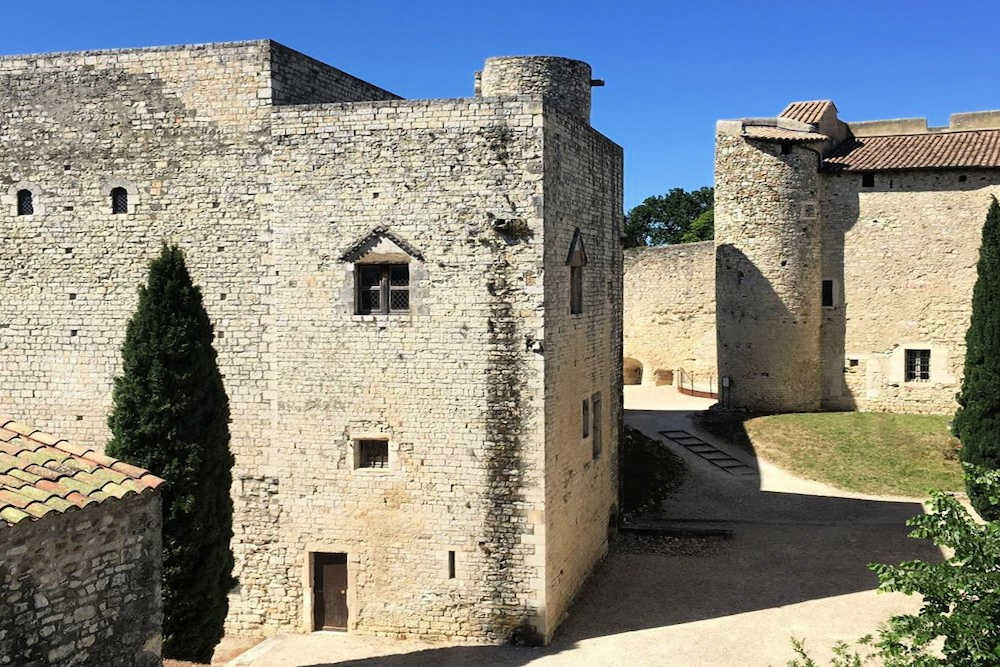
Château des Adhémar is located 616 km away from Paris, in a welcoming southern town of Montélimar in southeast France. Built at the top of the hills, the castle has the most magnificent views of the entire town. It’s accessible by car or a leisurely walk on foot.
The Southern Romanesque style of the castle dates back to the 12th century when the new medieval palace was raised by the powerful Adhémar family on the former 10th-century castle mound. At the end of the 16th century, Château des Adhémar became a citadel and then served as a prison until 1926.
The fortified castle has a chapel, tower, curtain wall, and a house, once the centre of religious, social, and family life. Not all the architectural fragments were preserved through the centuries, but you can still see the monumental doorway that leads to three large inner rooms with arched architecture and decorated with sculptured columns.
Château des Adhémar is now an art centre hosting exhibitions, meetings, shows, and conferences all year long. Culture enthusiasts will enjoy a nicely renovated medieval site and a fine collection of modern art. The small entrance fee also includes access to the Saint Martin Contemporary Art Museum located downtown.
When visiting, make sure you take a stroll in the park at the foot of the castle. It has excellent views of the surrounding countryside.
Contribution and Photo from Leslie of Backpackers Thailand
Reviews of Château de Adhémar | 24 Rue du Château, 26200 Montélimar, France
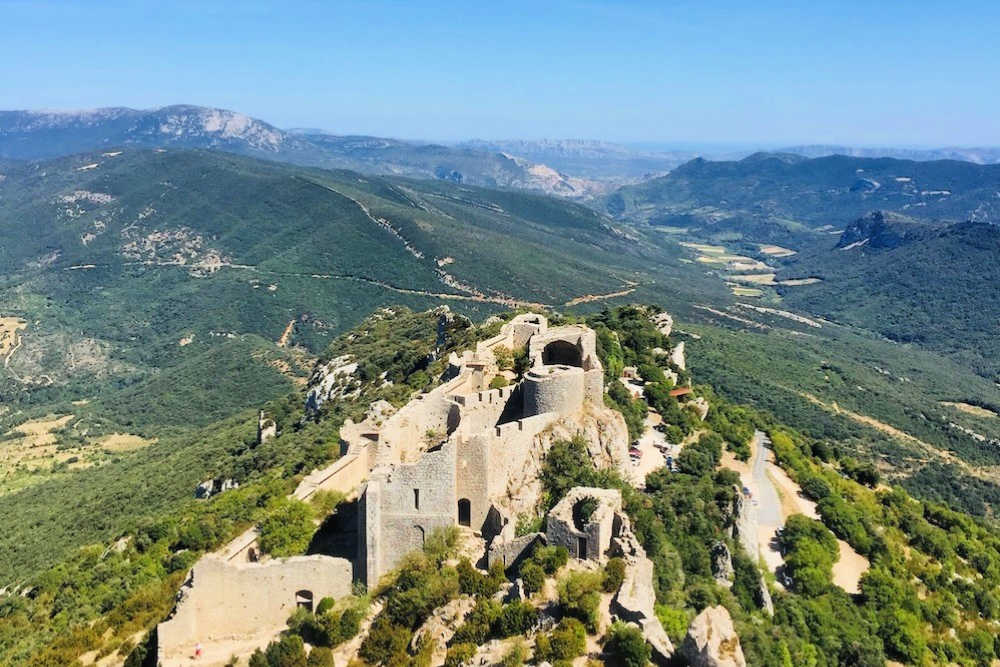
Château de Peyrepertuse is a dramatic ruined fortress high in the French Pyrenees, in the Occitanie region in southwestern France. The 11th-century castle was built on a limestone cliff and as you approach, seems to be hewn from the very rock on which it sits.
If you’re in the area during your French holiday, then take the ‘Path of the Cathars’ up from the local village of Duilhac-sous-Peyrepertuse (where you can park) or drive the twisting road up to the castle. From the entrance, you must climb further, upon a series of paths and steps to get to the castle itself. No wonder it is known as the citadel of vertigo!
You are rewarded at the last step by the most incredible views across Occitanie, the Pyrenees and surrounding landscapes, all the way east to the sparkling blue Mediterranean. Enter the atmospheric castle and be in awe of the centuries-old craftsmanship that ensures this castle continues to stand today. Much longer than it is wide, you can explore the walls, inner rooms and courtyards where people lived and worked. Head out to the triangular Lord of the Rings-esque pointed tip, where the strategic positioning of this castle becomes so apparent.
There are plenty of places for a picnic, surrounded by stunning landscapes and nature. From the castle head back to the village and a further few minutes away you will find the gorgeous clear waters of the Gorges du Verdouble, a fantastic spot for wild swimming to cool off at the end of the day.
Contribution and Photo from Izzy and Phil of The Gap Decaders
Reviews of Château de Peyrepertuse | 11350 Duilhac-sous-Peyrepertuse, France
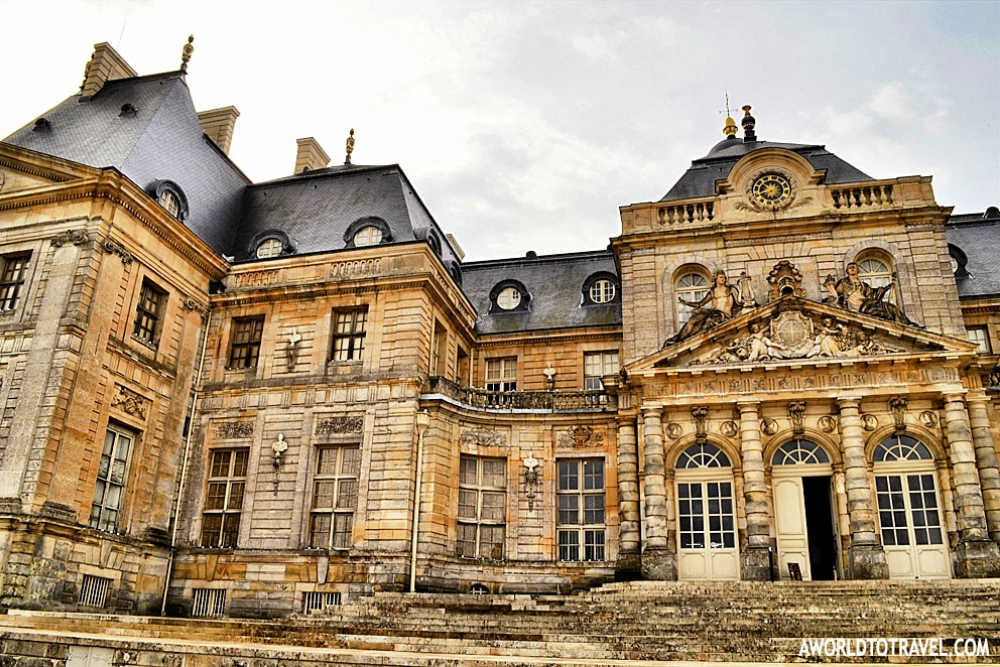
Normally open from March to November, one of the greatest attractions of this 17th-century baroque castle – whose architect is Louis Le Vau – is that it is possible to get there by public transport from Paris, as it is only 60km from the French capital. Located in the bourgeois region of Ile de France, it covers about 500 hectares and is visited by around 300,000 tourists a year.
Its interiors, which are possible to visit, are a clear example of the excesses of the time. You can also visit its majestic French-style gardens, designed by André Le Nôtre who was Louis XIV’s favourite gardener. He would also later design the gardens of Versailles which have noble statues, perspective games, and other visual effects so typical of this era.
It is said that it was one of the largest private palaces in all of France and that its halls and gardens, which occupy an area of more than 35 hectares, were the scenes of important events in the last centuries attended by more than 3,000 people.
Who would not like to be invited to a party at Vaux Le Vicomte? The only tricky thing would be choosing suitable clothing. But worry not, there is a vintage costume rental service for visitors. Have fun!
Contribution and Photo from Inma of A World To Travel
Reviews of Château de Vaux-le-Vicomte | 77950 Maincy, France
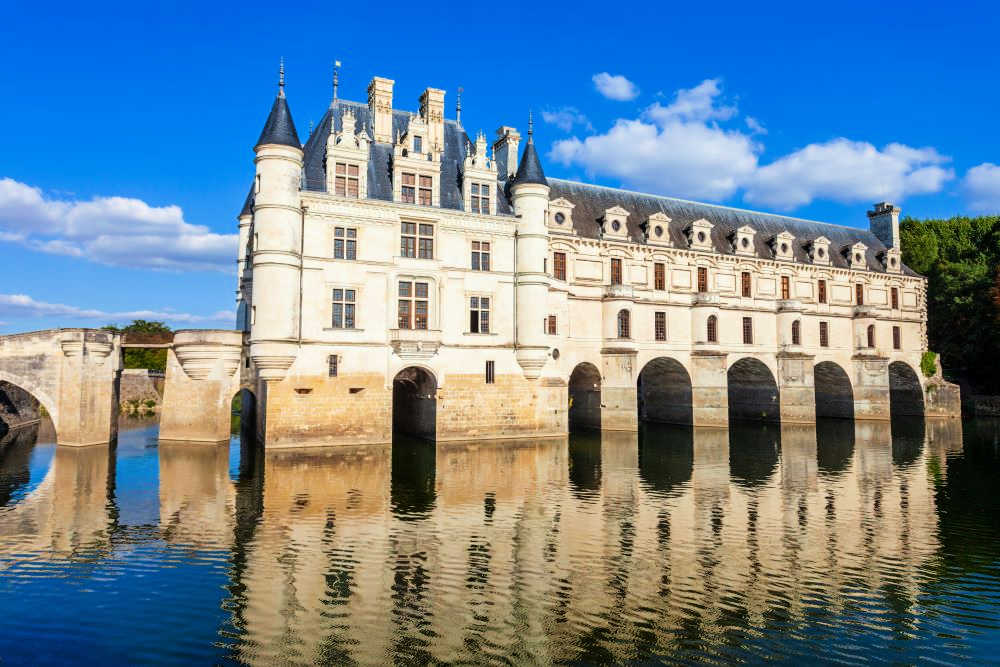
Of all the castles to visit in France, the Château de Chenonceau is the most visited of all apart from the Palace of Versailles. This has a lot to do with its fairytale setting. The château has been built across a river in a forest. Château de Chenonceau spans the River Cher and is located close to the little village of Chenonceau. If you are planning a visit to Château de Chenonceau, it is easily reached by car from Tours and Ambroise and there are occasional buses from Ambroise.
The castle was built in Gothic and French Renaissance style in 1514. The mistress of King Henry II, Diane de Poitiers, extended the castle over the river and had beautiful gardens made. When the king died, his widow, the powerful Catherine de Medici took ownership of the castle and had a gallery constructed over the river and her own gardens planted.
Several other powerful noblewomen and queens fought over and changed the château and you can learn about them in an exhibition in the gallery. Their influence is why the Château de Chenonceau is often called the “Lady’s Castle”.
The castle was bombed by both the Germans and the Allies in the Second World War but it has been beautifully restored, including its chapel, garden maze and the garden of Catherine de’ Medici.
Contribution and Photo from Monique of Trip Anthropologist
Reviews of Château de Chenonceau | 37150 Chenonceaux, France
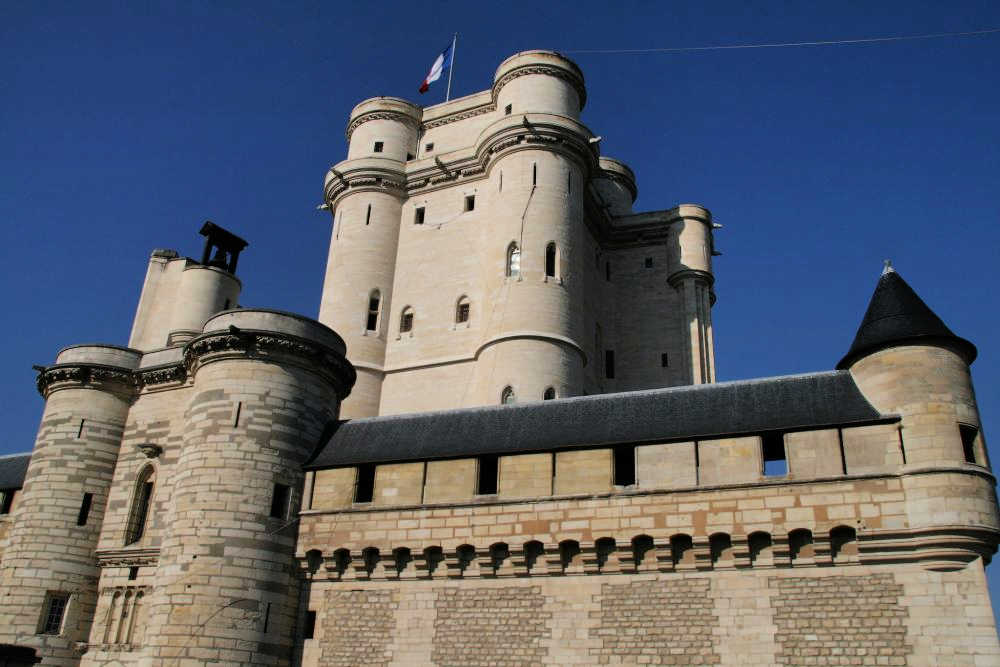
Located just on the outskirts of Paris, this castle is an easy one to fit into your itinerary. A terrific example of French medieval architecture, the Château de Vincennes was built in the fourteenth and fifteenth centuries. Unfortunately, it suffered extensive damage during World War II, but it has now been faithfully restored and looks much as it would have hundreds of years ago.
You may already be familiar with the name “Vincennes”, as it’s also the name of the largest public park in Paris, called Bois de Vincennes. Well, this was originally a royal hunting preserve, and the castle started out as a hunting lodge that was built next to it. Allow yourself some extra time to explore the park while you’re here.
The 52-meter tall keep is the most impressive feature of the castle with tours of the upper floors of the keep and the Sainte-Chapelle available at an additional cost. Joining these tours is the only way to access the upper floors and to enjoy the view from the rooftop terrace.
When you’ve finished exploring the castle, head to the nearby Bioteafood for lunch. A cosy vegetarian restaurant located right between the Bois de Vincennes and the castle, it serves some of the best veggie food in Paris.
Contribution and Photo from Wendy Werneth of The Nomadic Vegan
Reviews of Château de Vincennes | Avenue de Paris, 94300 Vincennes, France
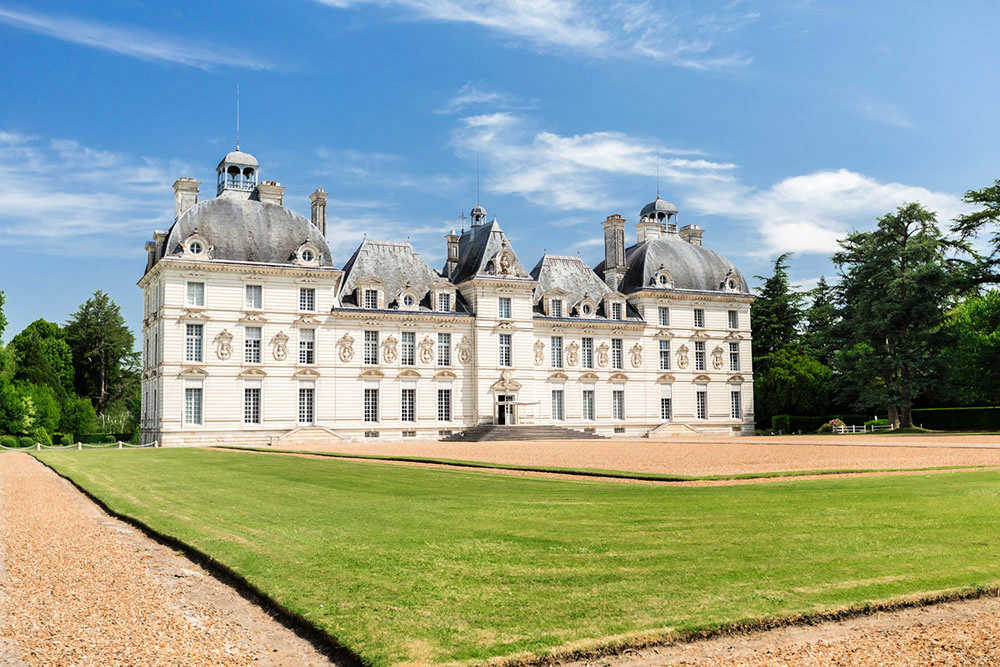
Château de Cheverny is located in Cheverny, in the province of Loir-et-Cher in the Loire Valley, France. Today’s castle was built by Henry Hurault sometime between 1624 and 1630. Their daughter, Elizabeth, completed the interior of the castle in 1650 with a lot of help from the painter, Jean Mosnier.
The Château de Cheverny was opened to all in 1922 and the owners invite tourists to enjoy their magnificent heritage. Today, the beauty of this castle is admired by over 350 thousand visitors a year whether they visit its botanical park, amazing interior, or both.
The furniture and decorations are incredibly well preserved. An interesting thing about the formal dining room, which is located on the ground floor, is that there are 34 wooden panels on which the story of Don Quixote is painted. It is also possible to spend the night in one of the apartments in the castle.
Cheverny is also known for hunting with the help of dogs. Quipage de Cheverny was founded in 1850, and today only deer hunting is allowed in the Cheverny Forest. Feeding hunting dogs is a special experience and takes place in front of visitors to the castle.
Contribution and Photo from Mark of Vogatech
Reviews of Château de Cheverny | 41700 Cheverny, France
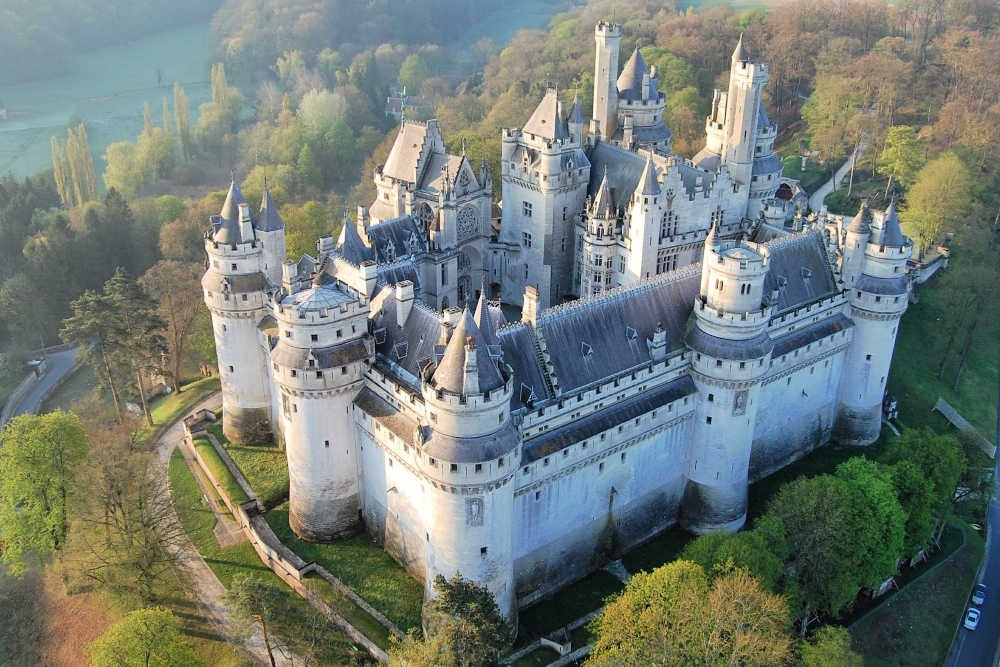
At the south-eastern edge of the Forest of Compiegne, where the armistice was signed at the end of World War I, you can find the fairy-tale castle of Château de Pierrefonds. Dating from the late 14th-century the castle has been rebuilt, razed and subsequently recreated.
After being partially deliberately demolished by the troops of Louis XIII it lay in ruin for more than 200 years even after being purchased by Napoleon I in 1810. It was Napoleon Bonaparte that ordered the castle’s restoration, a task that grew in scope and cost until the restoration was halted due to a lack of funds. The castle’s exterior was complete, but the interiors were unfinished.
The restorer, Viollet-le-Duc, recreated the castle as he thought it should have been rather than from historic documents, therefore, what you see today is not how the interior would have been laid out in the original château. But that shouldn’t distract you from visiting as the stunning architecture and excellent condition of the castle make it well worth a visit.
The castle has also been used as a filming location several times including for Highlander: The Series, The Story of Joan of Arc, and Merlin so if it looks familiar to you when you go, that might be the reason!
Reviews of Château de Pierrefonds | Rue Viollet le Duc, 60350 Pierrefonds, France
Looking for more information to plan your visit to France? You may find these articles helpful.
RESOURCES | PLAN YOUR TRIP TO FRANCE
- For all things France, you can’t go wrong with Rick Steves! Check out his France travel guide, full episodes of his TV show, or download his app for excellent audio tours.
Some of the links in the post above are affiliate links. This means if you click on the link and purchase the item, we will receive an affiliate commission but this does not affect the price to you. Please read our full disclosure policy here.






